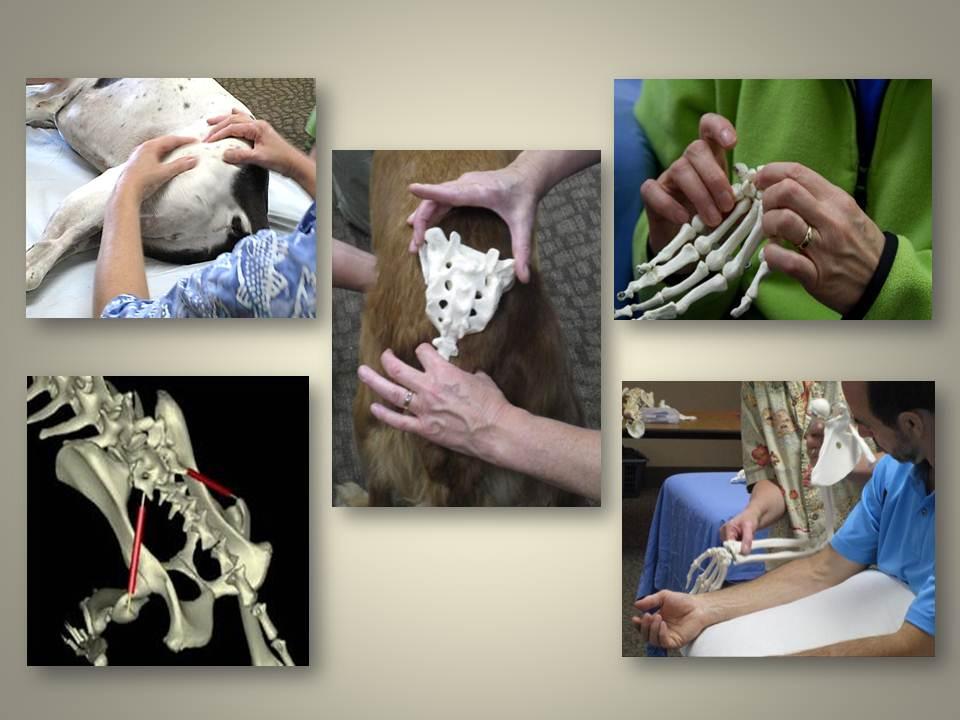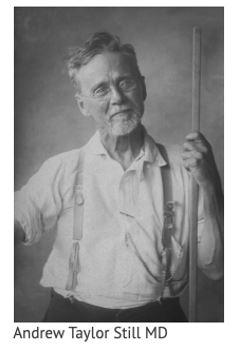

PHILOSOPHY of OSTEOPATHY
Osteopathy is not a set of techniques but rather it is seen more of a philosophy, a special way of thinking how we approach the healing of the body! This philosophy is based upon sound and basic principles of anatomy and nature. It is simple in approach and very sensible. We enhance Nature’s own ability to heal!
-A.T. Still MD, DO, Autobiography
 What is Osteopathy?
What is Osteopathy?
Osteopathy is a non-pharmaceutical “hands-on” approach that encourages the body to heal itself by using the body’s intrinsic forces and corrective mechanisms to achieve homeostasis. Osteopathy views the body as a FUNCTIONAL and HOLISTIC unit. Practitioners of osteopathy believe that the body knows what is best for itself and that treatments should be aimed at strengthening the body’s own defense mechanisms rather than suppressing symptoms of disease. Osteopathy is derived from the Greek words OSTEON (tissue) and PATHOS (to suffer/to feel). It is essentially “feeling the motion of the tissues and the usage of bones”.
History
At the end of the 18th century, American physician Andrew Taylor Still, MD, DO discovered that he was gifted and able to heal patients with his energetic touch. He could change their physiology and heal many patients in Missouri and surrounding states. He was close to nature and studied the secrets of nature’s design, believing that in nature you can find the answers for healing the body! He realized that the human body was potentially PERFECT in Structure, Form and Function. In his mind, he saw the body as a highly complex machine, that can only function optimally if it was in good alignment and lubricated well. He discovered an important direct relationship between the musculo-skeletal system and the function of the rest of the body.
“You begin with anatomy, and you end with anatomy, a knowledge of anatomy is all you want or need”.
-A.T. Still, MD, DO, Philosophy of Osteopathy
The Unity of Function
He concluded that the UNITY of FUNCTION of the body depended on three major systems, the circulation (fluid dynamics), the neurological system (communication), and fascia (connective tissue). Fascia is seen as the unifying factor because of its significant appearance in the body. It surrounds blood and lymph vessels, as well as, lymph nodes, nerves, and the outer layer around organs. Fascia is important in the body for support, lubrication, and acts as a mechanical “brain” through compression and traction forces in the musculo-skeletal system.
These three functional systems organize the body into a “unified” WHOLE! Any inappropriate alteration (trauma) in the structure and fluid dynamics can trigger dysfunctions locally or in other parts of the body. The body attempts to adapt to dysfunction and continues to compensate until it can no longer do so. At that point, the body will break down, resulting in disease and/or dysfunction in parts of or the whole body.
Disease – Not at Ease!
Disease happens in the body because it is not at ease! The body starts to break down which means different parts of the body are no longer functioning smoothly or rhythmically working together. Neuro communication starts to break down, and the flow of fluids (blood, lymph, and/or spinal fluids) can be disturbed or diminished (stagnation) in the dysfunctional areas. These stresses (acute or chronic) often lead to disease in inherently weak areas in the body such as sites of genetic weakness and/or at the site of physical injury.
Rule of the Artery!
Andrew T. Still, MD, DO was very unique in his approach at looking at the body. When the blood and lymph supply flow freely and undisturbed, the tissues in the body are healthy and “at ease”. When there is a trauma (compression, traction or shear) to those structures, you get an alteration if the fluid dynamics and tissues start to break down. He realized right from the start that when the body was traumatized (acute or chronic), it will go into a “hierarchy of protection” mode to protect itself increasing its chances of survival. The body will protect itself with muscle spasms around an injured blood vessel. He called this the “Rule of the Artery” meaning the body will always “protect” around the highest denominator, the blood supply! No healthy blood flow, no healthy tissues!
His order of hierarchy was very different than other medical modalities that usually begin with the musculo-skeletal system. His hierarchy of protection was:
1. Blood supply, the lymph supply, and fascia (in this order, but all are integrated)
2. Nervous system
3. Organs
4. Endocrine system
5. Musculo-skeletal system (muscles are movers or muscles are protectors!)
Using this order of hierarchy, you also need to address the correct order of techniques for different injuries. Osteopathic manipulation of the vascular and lymphatic dysfunctions will help restore the freedom in the injured tissues, normalizes and restores fluid flow, relaxes muscle spasms and enhanced inherent physiological functions. The healing process can then begin!
Why use Osteopathic “Normalization Techniques” for you
or your animal?
Most of the patients that come to our clinic, both human and animal have already seen other well-qualified, skillful practitioners from either the conventional or alternative worlds of care, sometimes both!
These patients are:
-
- Searching for alternatives that provide successful, affordable, and long-lasting improvements in health and well-being
- Frustrated with the lack of success or only temporary success of prior treatments
Osteopathy has some fundamental differences in its approach of DIAGNOSIS and TREATMENT of an ill/injured animal or human. The focus will be more on the integrity of the body with analyses of structure and function in its totality. A regime of only a few osteopathic treatments commonly helps restore a human’s or an animal’s normal function more quickly and permanently than using stretching and strengthening exercises alone. First restore FUNCTION, then restore STRENGTH!
Form directs Function and Function direct Form is another unique of osteopathic thinking. The architecture (FORM) of the body is not an accidental design, but rather the body is constructed in a certain way because the structure fulfills a specific FUNCTION. When the normal form is altered, not “at ease”, by acute or chronic stresses on the body, the body’s function (health) will diminish over time, temporarily or permanently.Example: If a patient visits our clinic with a knee injury, we will look at and treat the entire patient, not only the knee! Our body is made of much more than just joints and muscles alone. All the cells and tissues including bones, fascia, muscles, tendons, blood vessels, vital organs, and nerves are alive and connected and dependent upon each other for function and survival. They are continually engaged in dynamic, rhythmic, pulsating motions inside our bodies. The circulation of blood, lymph, and cerebral spinal fluid, for example, varies if we are exercising or sitting still, or are healthy versus sick.Our body doesn’t FUNCTION properly if blood and lymph are not flowing freely and undisturbed. When blood flow is restricted by trauma (physical or emotional), our tissue health diminishes because of the lack of oxygen, ischemia, nutrients, and our physiological functions are compromised. Our tissues will contract, twist, and compress. Dysfunctions begin to develop, and the body starts to slowly decompensate and break down over time.
DIAGNOSIS in Osteopathy
“An osteopath reasons from his knowledge of anatomy! He compares the work of the abnormal body with the normal body”. At.T. Still, MD, DO Osteopathy Research and Practice.
If we analyze the word “diagnosis”, we see that “dia” means “through” and “gnosis” means “essential knowing”. In osteopathy, the art of differential diagnosis is both essential and not easy to do. For example, the movements in the lumbo-pelvis area during the gait cycle may seem complex and overwhelming, especially when we are observing an altered gait. So, practitioners use guidelines or rules to help organize the physical examination findings into a useable framework for an osteopathic diagnosis, which then guides treatment.
There are three questions to ask after the physical examination is complete, and whose answers help the practitioner in arriving at a diagnosis and treatment plan.
WHERE is the problem? WHAT is the problem? HOW do I treat the problem?
This is the art of osteopathy, to be able to master “differential diagnosing” and work with the answers to these questions. It will help you locate the most restricted and dysfunctional area (“area of greatest restriction”) and determine what problems are present, and what technique(s) to use to resolve the abnormalities found in the tissues, as well as, and what sequence of treatment to follow!